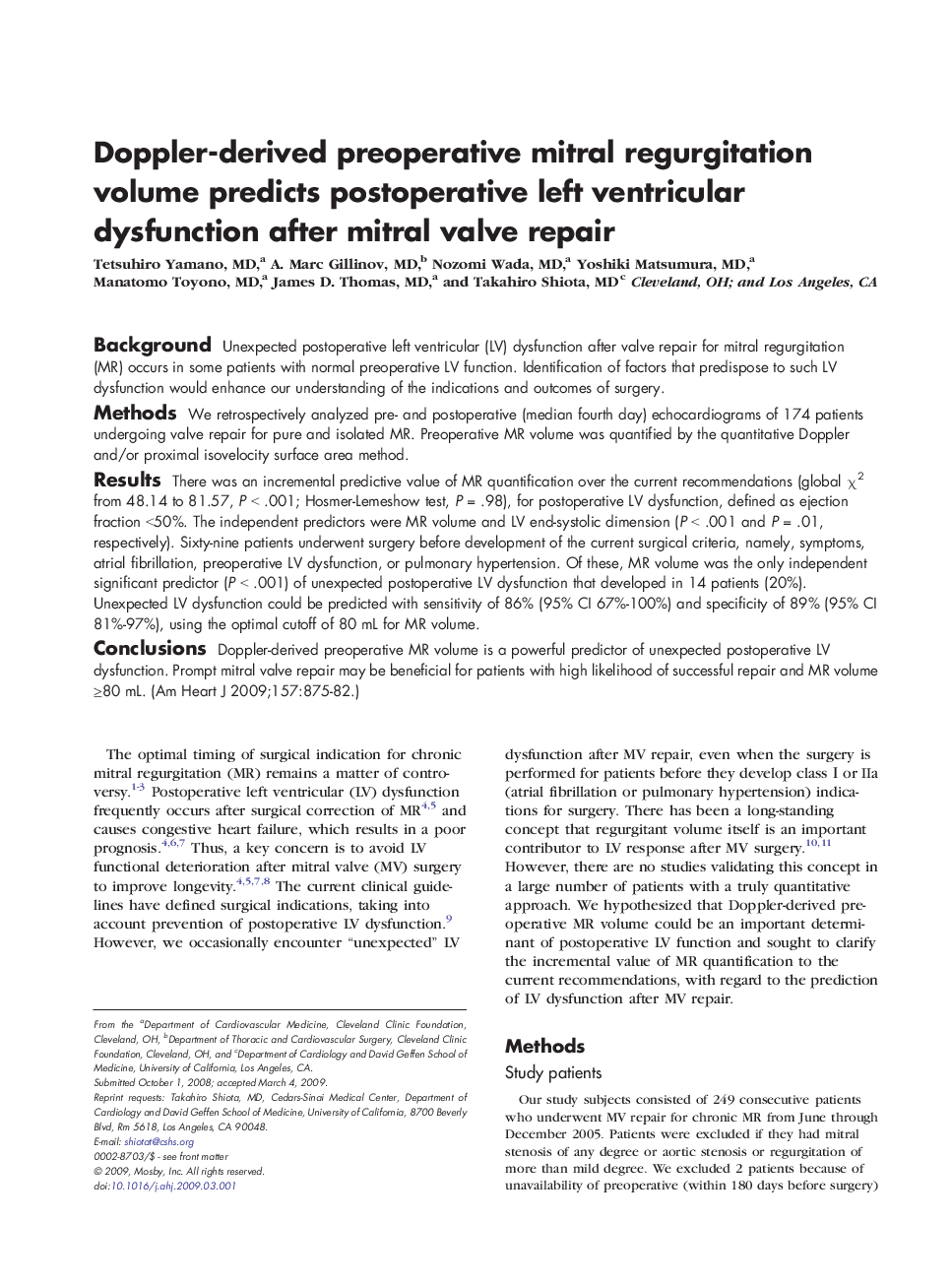| Article ID | Journal | Published Year | Pages | File Type |
|---|---|---|---|---|
| 2849748 | American Heart Journal | 2009 | 8 Pages |
BackgroundUnexpected postoperative left ventricular (LV) dysfunction after valve repair for mitral regurgitation (MR) occurs in some patients with normal preoperative LV function. Identification of factors that predispose to such LV dysfunction would enhance our understanding of the indications and outcomes of surgery.MethodsWe retrospectively analyzed pre- and postoperative (median fourth day) echocardiograms of 174 patients undergoing valve repair for pure and isolated MR. Preoperative MR volume was quantified by the quantitative Doppler and/or proximal isovelocity surface area method.ResultsThere was an incremental predictive value of MR quantification over the current recommendations (global χ2 from 48.14 to 81.57, P < .001; Hosmer-Lemeshow test, P = .98), for postoperative LV dysfunction, defined as ejection fraction <50%. The independent predictors were MR volume and LV end-systolic dimension (P < .001 and P = .01, respectively). Sixty-nine patients underwent surgery before development of the current surgical criteria, namely, symptoms, atrial fibrillation, preoperative LV dysfunction, or pulmonary hypertension. Of these, MR volume was the only independent significant predictor (P < .001) of unexpected postoperative LV dysfunction that developed in 14 patients (20%). Unexpected LV dysfunction could be predicted with sensitivity of 86% (95% CI 67%-100%) and specificity of 89% (95% CI 81%-97%), using the optimal cutoff of 80 mL for MR volume.ConclusionsDoppler-derived preoperative MR volume is a powerful predictor of unexpected postoperative LV dysfunction. Prompt mitral valve repair may be beneficial for patients with high likelihood of successful repair and MR volume ≥80 mL.
